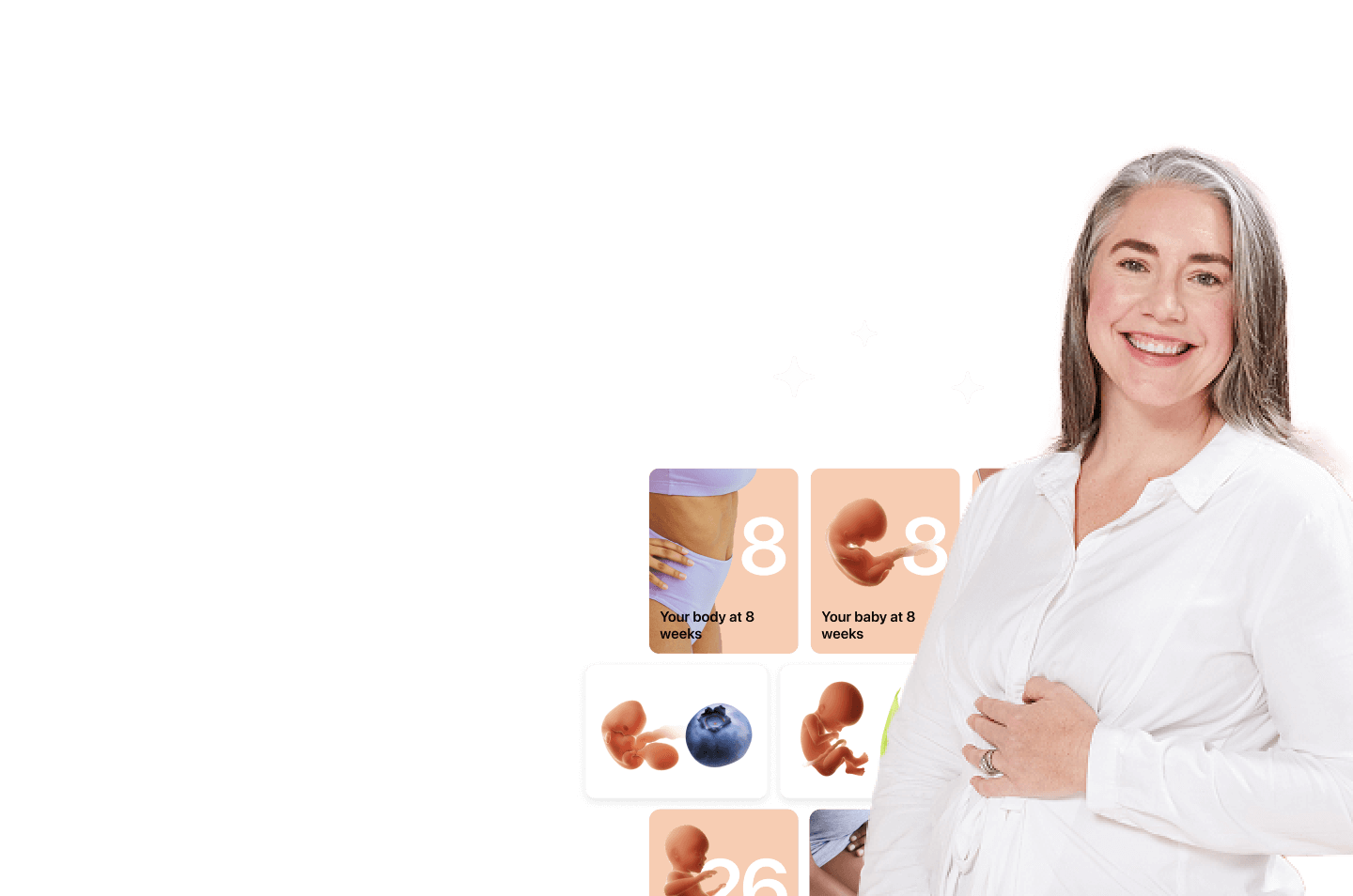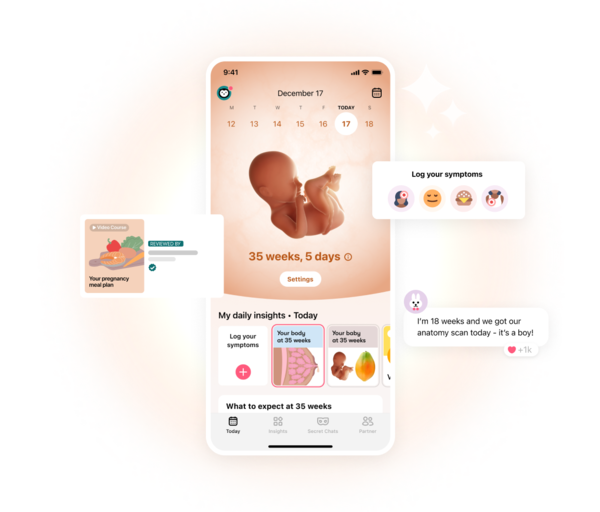Fetal heart tracing allows your doctor to measure the rate and rhythm of your little one’s heartbeat. The average rate ranges from 110 to 160 beats per minute (bpm), with a variation of 5 to 25 bpm. Together with Flo, learn how fetal heart tracing actually works.
-
Tracking cycle
-
Getting pregnant
-
Pregnancy
-
Help Center
-
Flo for Partners
-
Anonymous Mode
-
Flo app reviews
-
Flo Premium New
-
Secret Chats New
-
Symptom Checker New
-
Your cycle
-
Health 360°
-
Getting pregnant
-
Pregnancy
-
Being a mom
-
LGBTQ+
-
Quizzes
-
Ovulation calculator
-
hCG calculator
-
Pregnancy test calculator
-
Menstrual cycle calculator
-
Period calculator
-
Implantation calculator
-
Pregnancy weeks to months calculator
-
Pregnancy due date calculator
-
IVF and FET due date calculator
-
Due date calculator by ultrasound
-
Medical Affairs
-
Science & Research
-
Pass It On Project New
-
Privacy Portal
-
Press Center
-
Flo Accuracy
-
Careers
-
Contact Us
Fetal Heart Tracing: All You’ll Ever Need to Know


Every piece of content at Flo Health adheres to the highest editorial standards for language, style, and medical accuracy. To learn what we do to deliver the best health and lifestyle insights to you, check out our content review principles.
What is fetal heart tracing?
Typically performed in the later stages of pregnancy and during labor, fetal heart tracing results can say a lot about the health of your baby. Fetal heart rate (FHR) may change as they respond to different conditions in your uterus. Any type of abnormality spotted in a fetal heart tracing could indicate an inadequate supply of oxygen or other medical issues.
Your doctor evaluates the situation by reviewing fetal heart tracing patterns. The main goal is to identify fetuses who are prone to injuries stemming from hypoxia (or a lack of oxygen for fetal tissues). Whenever possible, they will implement measures to prevent an unfavorable outcome.
Types of fetal heart tracing
Your doctor analyzes FHR by examining a fetal heart tracing according to baseline, variability, accelerations, and decelerations.
Baseline is calculated as a mean of FHR segments that are the most horizontal, and also fluctuate the least. These segments help establish an estimated baseline (for a duration of 10 minutes) which is expressed in beats per minute. A normal baseline rate ranges from 110 to 160 bpm.
- Tachycardia occurs when the fetal heart rate baseline is above 160 bpm.
- Bradycardia, in contrast, is when the fetal heart rate baseline falls below 110 bpm.
Variability describes fluctuations in the baseline FHR, whether in terms of frequency, amplitude, or magnitude.
- Normal variability is a bandwidth value from 5 to 25 bpm.
- Increased variability is a bandwidth value exceeding 25 bpm that lasts for more than half an hour.
- Reduced variability is a bandwidth value below 5 bpm lasting for more than 50 minutes. When this variability presents itself in a fetal heart tracing, it could be caused by hypoxia of your fetus’ central nervous system. Since it’s difficult to visually interpret this parameter, in borderline scenarios, your doctor must carefully reevaluate the results.
Accelerations represent a sudden increase in FHR of more than 15 bpm in bandwidth amplitude. (They start and reach maximum value in less than 30 seconds.) Accelerations last from 15 seconds to 10 minutes, and the majority occur in conjunction with fetal movements. It means your fetus is neurologically responsive and doesn’t have an oxygen deficiency.
Decelerations represent a decrease in FHR of more than 15 bpm in bandwidth amplitude. They last for longer than 15 seconds.
- Early decelerations are short and shallow, with normal variability. They tend to coincide with uterine contractions, and might be produced by compression of your fetus’ head rather than hypoxia.
- Variable decelerations constitute a rapid drop (reaching their lowest point less than 30 seconds after starting). They exhibit good variability and recover rapidly to the baseline rate. Variable decelerations vary in shape and size, and are also related to contractions.
- Prolonged decelerations last for longer than 3 minutes. Note, deceleration of more than 5 minutes with reduced variability and bradycardia often means acute fetal hypoxia.
Why is fetal heart tracing needed?
Electronic fetal monitoring may help detect changes in normal FHR patterns during labor. Your doctor can then take steps to manage the underlying medical problem. Fetal heart tracing is also useful for eliminating unnecessary treatments. A normal fetal heart tracing would reassure both you and your obstetrician that it’s safe to proceed with labor and delivery.
Take a quiz
Find out what you can do with our Health Assistant
Electronic fetal monitoring may help detect changes in normal FHR patterns during labor.
Ordinarily, your baby’s heart beats at a faster rate in the late stage of pregnancy, when they’re especially active. Issues such as hypoxia, however, might slow their heart rate. Depending on your health status and your baby’s, nonstress tests (one to two times a week, if not daily) might be a good idea.
How fetal heart tracing is performed

Your doctor uses special types of equipment to conduct electronic fetal monitoring. With a Doppler ultrasound, for example, an ultrasound probe is fastened to your stomach. The probe sends your baby’s heart sounds to a computer and shows FHR patterns. The resulting printout is known as a fetal heart tracing, which will be read and analyzed.
Electronic fetal monitoring is performed in a hospital or doctor’s office. You have to lie down or sit in a reclined position for the test, which lasts about 20 minutes. Your obstetrician reviews the fetal heart tracing at regular time intervals. If any problems arise, reviews are done more frequently.
Electronic fetal monitoring is performed in a hospital or doctor’s office. You have to lie down or sit in a reclined position for the test, which lasts about 20 minutes.
Continuous monitoring of your baby’s heart rate is conducted during labor and delivery as well. They’ll wrap a pair of belts around your belly. The first uses Doppler ultrasound to monitor FHR patterns, while the second measures the duration and frequency of uterine contractions.
How to prepare for fetal heart tracing
Fetal heart tracing is a type of nonstress test that doesn’t require any specific preparation. Your doctor will explain the steps of the procedure. Be sure to ask any questions you might have beforehand.
Takeaway
A way to assess your baby’s overall health, fetal heart tracing is performed before and during the process of labor. Your doctor can confirm the likelihood of hypoxic injury using fetal heart tracing. They’re empowered by these results to intervene and hopefully prevent an adverse outcome.


Hey, I'm Anique
I started using Flo app to track my period and ovulation because we wanted to have a baby.


The Flo app helped me learn about my body and spot ovulation signs during our conception journey.


I vividly
remember the day
that we switched
Flo into
Pregnancy Mode — it was
such a special
moment.
Real stories, real results
Learn how the Flo app became an amazing cheerleader for us on our conception journey.
References
History of updates
Current version (04 November 2020)
Published (30 December 2019)
In this article

Get your personal guide to pregnancy with the Flo app
-
Follow your baby's growth week by week
-
Get expert info on symptoms, safe foods, and more
-
Chat with other parents-to-be




